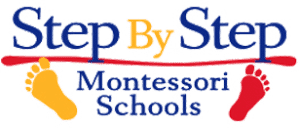
By Chelsea Klipstein
Spoken language is a notable part of everyday life in a Montessori Children’s House classroom. Through language, we have the ability to express and communicate ideas, thoughts, needs and emotions. Language acquisition allows children to become active members of the community. Language is also a way for children to gain knowledge and is the foundation for social cohesion by allowing us to communicate with one another in order to live and establish relationships.
In the Children’s House, language work composes about half of the classroom materials. Spoken language is alive throughout the Montessori classroom during the day as the children move freely exploring materials while asking questions and discussing their observations. The teachers in a Montessori environment serve as the most important “tool” for spoken language, and therefore teachers must ensure the environment is bursting with a rich variety of language experiences.
A huge explosion in spoken language occurs for children from about 2 ½ to 3 years of age. They are able to build on simple sentences and use more words to express themselves, along with building their vocabulary through a variety of experiences. The children are in a sensitive period for spoken language during their time in the Children’s House. The Montessori teacher supports learning and the expansion of vocabulary by providing scientific names of objects in the environment, storytelling and singing songs.
The three main areas of spoken language include vocabulary enrichment, three-period lessons and language development and appreciation. Like in all other areas of the environment, we begin with what is familiar to the child in his or her home.
For example, when referencing a window, we will not only use the word while engaging in a meaningful activity, we will also give the names of the different parts that make up a window such as windowpane and windowsill. This gives the children better opportunities to enhance their vocabulary and ability to discuss their world. Language lessons in the classroom support vocabulary enrichment. The orientation game builds the child’s vocabulary and helps the child to classify what is in their environment.
Cultural folders further expand the child’s knowledge of cultures around the world. These pictures with stories generate ideas, allowing children to have conversations about their world.
The use of spoken language in the classroom also leads to the desire to read and write. The ability to communicate using an expansive vocabulary can lead to creative, spontaneous writers. Children feel confident in expressing their ideas, resolving conflict and working cooperatively. Spoken language helps the children become linguistically independent in the environment. Language appreciation helps children fall in love with all aspects of language.
O’Shaughnessy, M. (20160. Spoken Language Introduction. Montessori Training Center of Minnesota, St. Paul, Minnesota.

